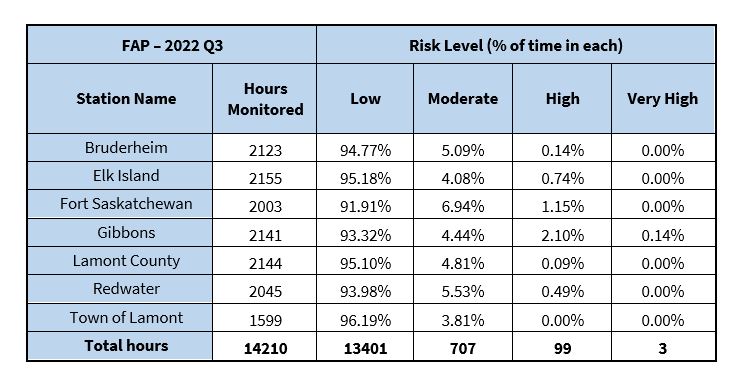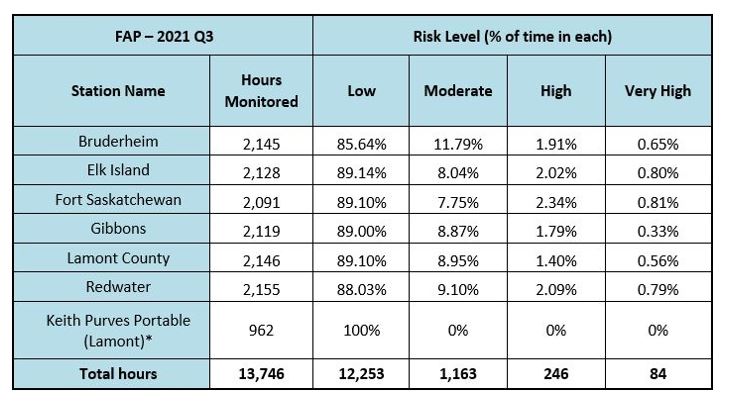Fort Air Partnership (FAP) is relocating its current Lamont County continuous air monitoring station into the Town of Lamont in late October or early November 2022.
The decision follows a one-year-long monitoring project in the Town that collected data from a portable air monitoring station between August 2021 and August 2022.
Data results
The data analysis shows that substance measurements between the two sites are comparable. The new Town location better enables FAP to meet a key monitoring objective, which is to conduct air monitoring where people live. The Town of Lamont was the largest population centre in the FAP Airshed with no continuous monitoring station.
The new location also improves overall regional air monitoring. The Town site is nearer to the eastern border of the Airshed and better situated to provide information on air quality leaving the Airshed when winds blow in from the western quadrants.
The current County station is approximately six kilometres west of the Town on a farmland site. The site was selected in 2003 in response to modelling indicating this area may experience higher measurements of sulphur dioxide (SO2). However, the data assessment shows there have been no exceedances of provincial SO2 objectives since the station was established.
New station parameters
The new station will monitor and collect data for the same parameters as the previous Lamont County station and continue to provide the data required to calculate a daily Air Quality Health Index (AQHI) and forecast.
Partners
FAP would like to thank the Town of Lamont for their support in securing a permanent site for the station, as well as the landowner of the Lamont County site for accommodating a monitoring station on your property for the last 19 years.
The Provincial Government, as a member of the Fort Air Partnership, approved the relocation.
Detailed Comparison Results between Lamont County Station and portable station situated in the Town of Lamont – August 2021 to August 2022
A comparison of the monthly averages shows that measurements are comparable between the two sites:
- Fine particulate matter (PM2.5) varied by an average of 0.1 ug/m3 between the two sites, with an equal distribution of higher and lower measurements at each site.
- Nitrogen dioxide (NO2) was an average of 1.2 ppb higher in the Town of Lamont compared to the more rural Lamont County site.
- Sulphur dioxide (SO2) in the Town of Lamont was, on average, 0.23 ppb lower than the Lamont County site, as the modelling in 2002 suggested.
- Hydrogen sulphide (H2S) varied by an average of 0.01 ppb between the two sites, with most months recording minimally higher measurements at the Town of Lamont site.
- Total hydrocarbons (THC) varied by an average of 0.01 ppm between the two sites, with most months either being equal or the Town of Lamont site recording minimally higher measurements.



